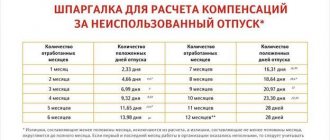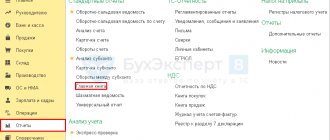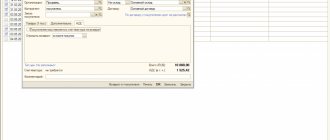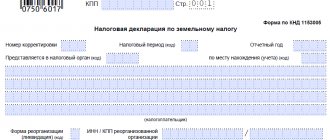BASIC
Under the general taxation system, peasant farms pay:
- VAT;
- property tax (if there are taxable objects);
- land tax (if there are taxable objects and if in the area in which the peasant farm operates there are no benefits for this tax);
- transport tax (if there are taxable objects);
- Personal income tax (as a tax agent).
As for income tax, peasant farms are not exempt from it (Article 246 of the Tax Code of the Russian Federation). However, if certain conditions are met, they will not have to pay this tax. In particular, for agricultural producers who have not switched to the Unified Agricultural Tax, a reduced rate has been established - 0 percent. This rate can be applied to activities related to the sale of produced agricultural products, as well as the sale of produced and processed own agricultural products. Such rules are established in paragraph 1.3 of Article 284 of the Tax Code of the Russian Federation.
The procedure for paying personal income tax also has some features.
Thus, there is no need to pay personal income tax on income received by members of a peasant farm (including its head) from the production (processing) and sale of agricultural products for five years, counting from the year of registration of the peasant farm. Such a benefit can be applied to the income of a member of a peasant farm only if he is using it for the first time and has not used it before. The benefit is provided by default, that is, there is no need to write any statements (notifications) to the tax office.
After five years, from this income, as well as initially from other income of members of the peasant farm and hired employees, its head pays personal income tax as a tax agent in the general manner.
This conclusion follows from Articles 207 and 226, paragraph 14 of Article 217 of the Tax Code of the Russian Federation.
The remaining taxes (VAT, property tax, land and transport taxes) are paid by the peasant farm in the general manner.
This follows from Articles 143, 226, 373, 357, paragraph 2 of Article 387, paragraph 1 of Article 388 of the Tax Code of the Russian Federation.
DAM with hired workers
If a peasant farm makes payments to employees, the DAM is submitted to the tax office at the place of registration no later than the 30th day of the month following the reporting period (first quarter, half year, nine months of the calendar year). In the calculation, the code for the place of presentation “ 120 ” is indicated, and section 1 with attachments and section 3 (with identification of individuals) for hired workers are filled out. When compiling the DAM for 2021, the code for the place of presentation “ 124 ” is indicated, and section 1 with appendices is filled out, section 3 (with identification of individuals) - for employees , as well as section 2 and appendix 1 to section 2 (with identification of individuals) - for members of peasant farms, including the head of the farm.
simplified tax system
If a peasant farm applies a simplified tax regime, then there are no specific features of its taxation under this regime. Therefore, calculate taxes in the general manner.
Situation: can a simplified peasant farm with the object “income” reduce the single tax by the entire amount of mandatory insurance contributions for the head and for all members of the peasant farm without a limit of 50 percent?
Answer: yes, it can, but only if the peasant farm does not use hired labor. Moreover, this applies to both peasant farms registered as an organization and those without registration of a legal entity.
Regardless of the form in which the peasant farm is registered - as an organization or without forming one, insurance premiums for compulsory pension (social, medical) insurance are always paid by the head of the peasant farm. And the law equates him to an individual entrepreneur.
The head of a peasant farm pays mandatory insurance premiums for himself and members of the farm in a fixed amount.
This procedure is established in paragraph 3 of Article 2 and paragraph 2 of Article 14 of the Law of July 24, 2009 No. 212-FZ.
Based on these provisions, the Ministry of Finance of Russia, in letter dated December 22, 2014 No. 03-11-06/2/66200, also for simplification purposes equated peasant farms to entrepreneurs. That is, a peasant farm without hired personnel can reduce the single tax by the entire amount of insurance premiums paid for the head of the peasant farm and its members (paragraph 3, subclause 3, clause 3.1 of Article 346.21 of the Tax Code of the Russian Federation). The 50 percent limit does not apply to them.
Peasant farm: essence and rules of foundation
From a legal point of view, a peasant farm is a commercial organization engaged in the production, processing and sale of agricultural products, and also provides services in this industry. The main regulatory act that regulates the activities of such farms, as of the year, is Federal Law No. 74 (https://www.consultant.ru/document/cons_doc_LAW_42662/). It establishes the basic standards in force for enterprises engaged in this type of activity. Among other things, the law determines the organizational forms permissible for conducting farming activities, the rights and obligations of the head and all members of the enterprise, the rules for admitting new members and hired personnel, and the features of registration of land plots in ownership and taxation.
On video: Peasant farm reporting features
The founder of a peasant farm must first determine the legal status of the new enterprise. In this case, it is permissible to open individual entrepreneurs and LLCs, depending on the strategy and scale of future activities. In most cases, a farm is registered as an individual entrepreneur, since this form provides for a simplified form of reporting and taxation.
There are several main types of taxation, and all of them are acceptable for farming . Despite the fact that the most common in this case is a single agricultural tax specially created for enterprises of this kind, other systems are also in demand, primarily the simplified taxation system, or simplified tax system, and the general regime known as OSNO.
BASIC
If the head of a peasant farm applies the general taxation system, then he pays:
- personal income tax;
- VAT;
- land tax, if in the area in which the peasant farm operates there are no benefits for this tax;
- transport tax.
The procedure for paying personal income tax has some features.
Personal income tax on the income of peasant farm members
There is no need to pay personal income tax on income received by members of peasant farms from the production (processing) and sale of agricultural products for five years, counting from the year of registration of the peasant farm. Such a benefit can be applied to the income of a member of a peasant farm only if he is using it for the first time and has not used it before. The benefit is provided by default, that is, there is no need to write any statements (notifications) to the tax office.
After five years, from this income, as well as initially from other income of members of the peasant farm, its head pays personal income tax as a tax agent in the general manner.
This conclusion follows from Articles 207 and 226, paragraph 14 of Article 217 of the Tax Code of the Russian Federation.
Personal income tax on the income of the head of a peasant farm as an entrepreneur
Since the head of the peasant farm is a member of the peasant farm, he can also use the personal income tax benefit. That is, do not pay this tax on income from production (processing) and sale of agricultural products for five years, counting from the year of registration of the peasant farm. This is possible provided that he is using such a benefit for the first time.
After five years, the head of the peasant farm pays personal income tax on such income in the general manner, like any other entrepreneur.
On income that is not income from production (processing) and sale of agricultural products, the head of the peasant farm also pays personal income tax on a general basis. There are exceptions to this.
Do not include in the personal income tax base:
- budget subsidies;
- budget grants received for the creation and development of peasant farms, home improvement for a beginning farmer, and the development of a family livestock farm.
This follows from Article 207, paragraphs 14, 14.1, 14.2 of Article 217 of the Tax Code of the Russian Federation.
Personal income tax on the income of hired employees of peasant farms
The head of a peasant farm, as an entrepreneur, can attract hired employees under employment contracts. From their income, he pays personal income tax in the general manner as a tax agent (Articles 207 and 226 of the Tax Code of the Russian Federation).
Sample filling
Download a sample of filling out the RSV for peasant farms.
Source:
"Clerk"
Heading:
peasant farm
DAM Peasant Farm Head of Peasant Farm Instructions for an Accountant
- Inna Kosnova, Clerk columnist, accounting and taxation expert
Sign up 6825
9750 ₽
–30%
Title page
In the address part
The form indicates the full name of the reporting organization in accordance with the constituent documents registered in the prescribed manner, and then in brackets - the short name. The form containing information on a separate division of a legal entity indicates the name of the separate division and the legal entity to which it belongs.
By line "Mail address"
the name of the subject of the Russian Federation, legal address with postal code are indicated; if the actual address does not coincide with the legal address, then the actual location of the respondent (postal address) is indicated. For separate divisions that do not have a legal address, a postal address with a postal code is indicated.
In the code part
The form must be marked with the code of the All-Russian Classifier of Enterprises and Organizations (OKPO) on the basis of the Notification of assignment of the OKPO code sent (issued) by the territorial bodies of Rosstat.
In the case of delegation of authority to provide statistical reporting on behalf of a legal entity to a separate division, a separate division in the code part of the form indicates the OKPO code (for a branch) or identification number (for a separate division that does not have the status of a branch), which is established by the territorial body of Rosstat at the location separate division.
Attention! To select the direction for submitting the report (TOGS), follow this procedure:
Attention! If the list of proposed TOGS does not contain the one you need, you can select it by clicking on the “Show all”
. Next, select the appropriate region and TOGS in this region.
Unified agricultural tax: norms and rules, package of documents
A person organizing a farming enterprise must decide on a suitable taxation system at the initial stage. As a rule, peasant farms can choose a single agricultural tax for their activities. But you can’t switch to this regime immediately, but only after the foundation of the enterprise, by submitting a special application to the Federal Tax Service in the first month after registration with the tax service. Another acceptable period for switching to the unified national economic system is the last day of the calendar year. In this case, the new regime can begin to be applied from the beginning of next year.
The Unified National Economic Economy assumes a 6 percent tax rate, which is calculated from the net profit of the enterprise. But if there is a certain decision of local authorities, the rate can be reduced to 4%.
On video: Receiving a grant for the development of peasant farms
Despite its intended purpose, not all farms can use the Unified National Economic Economy regime. Thus, this opportunity is offered only to enterprises that have at least 70 percent of their income directly from the production and sale of their own agricultural products, or agricultural consumer cooperatives, 70% of whose income comes from the sale of products produced by their members. Individual enterprises specializing in fishing activities and applying for the possibility of registering a unified economic system must have on average no more than 300 employees per year. Income from the sale of catch in fishing enterprises at the end of the reporting period cannot be less than 70 percent of total revenue. Enterprises engaged exclusively in the processing of agricultural products cannot switch to the Unified National Economic Economy.
The main rule and advantage of this reporting form is that the declaration is submitted only once a year. The maximum period for this procedure is March 31 following the reporting period. The popularity of the Unified National Tax Service is facilitated by this simplified format for filing a declaration; in addition, the list of documents submitted to the tax service is not too extensive.
One of the important requirements for taxpayers who have chosen a single agricultural tax is the mandatory maintenance of a book of income and expenses. It is no longer subject to certification by the Federal Tax Service this year. Before March 1, reporting in the RSV-2 form must be submitted to the territorial branch of the Pension Fund corresponding to the entrepreneur’s registration address. This form is approved by a special resolution of the Board of the Pension Fund of the Russian Federation dated 2015 (https://www.consultant.ru/document/cons_doc_LAW_187349/). It is the content of this regulatory act that determines the specific list of documents and the format of the tax return submitted by an individual or legal entity.
The list of submitted documents may increase depending on the current organizational form. Thus, for an LLC, annual filing of transport and land tax returns is required (these documents must be ready by February 1 of the year following the reporting year), as well as filling out accounting reporting forms by March 31. The rules regarding filling out the listed forms are set out in Articles 361, 398 and 23 of the Tax Code (https://www.consultant.ru/document/cons_doc_LAW_28165/a0e8f30a0f0fb615518d89883d8dda9d82411ff7/, https://www.consultant.ru/document/cons_doc_LAW_28165 /4f04afb0320c9c586d3279dff1bbd8bed211365a/, https://www.buhgalteria.ru/nalogoviy-kodeks/glava3/stat23/).
How to switch to Unified Agricultural Tax
If the individual entrepreneur is already working, you can switch to this mode only from the next calendar year. Before the end of the year, a notification is submitted to the tax office indicating the share of income from the sale of agricultural products or fish catch.
Newly registered individual entrepreneurs, in order to immediately begin working for the Unified Agricultural Tax, submit a notification within 30 days after registration.
Keep in mind that if at the end of the year the requirements for the use of the Unified Agricultural Tax are violated, you need to report this to the tax office. The tax will be recalculated as for OSNO and the arrears will have to be paid to the budget.
It is also possible to voluntarily abandon the Unified Agricultural Tax, but only from the new year. To do this, from January 1 to January 15, an application is submitted to the Federal Tax Service.







